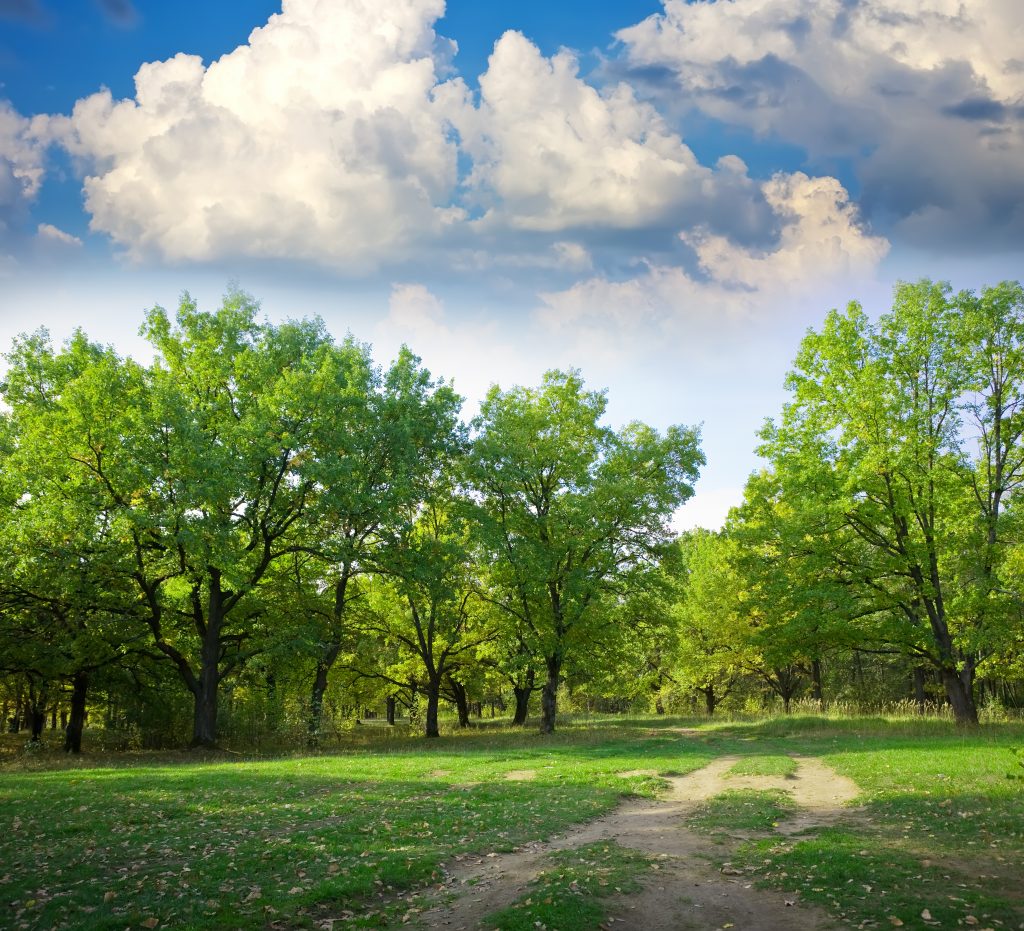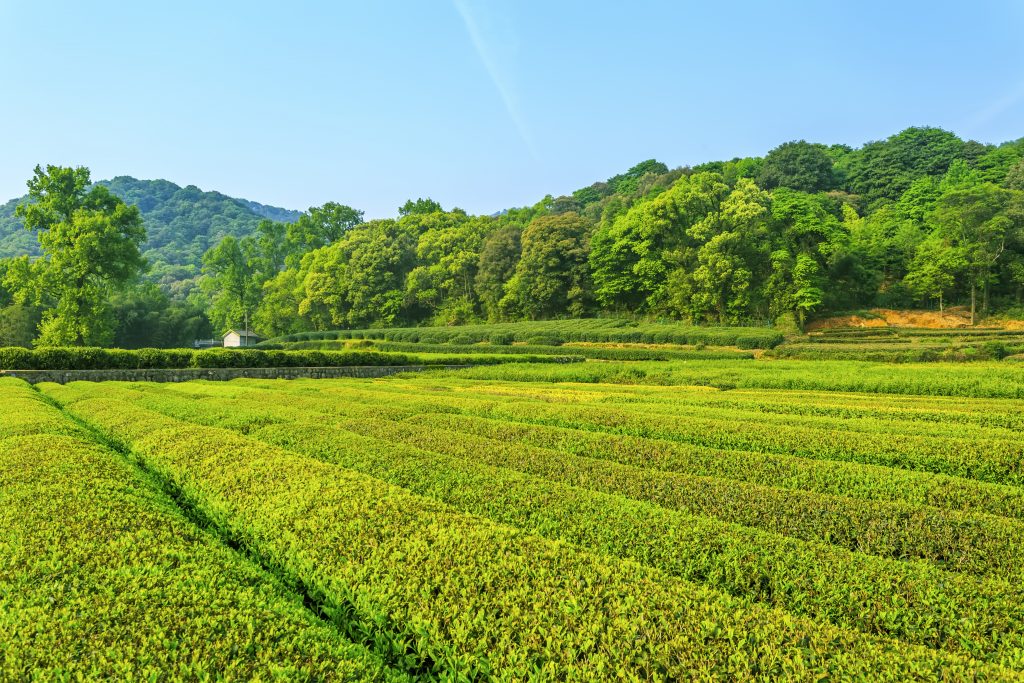THE ROLE OF TREES IN SUPPORTING SUSTAINABLE AGRICULTURE
THE ROLE OF TREES IN SUPPORTING SUSTAINABLE AGRICULTURE
Sustainable agriculture is a holistic approach to farming and food production that prioritizes environmental stewardship, economic viability, and social responsibility. It aims to meet the current needs for food, fiber, and other agricultural products without compromising the ability of future generations to meet their own needs. The significance of sustainable agriculture can be understood through several key aspects:

- Environmental Conservation: Sustainable agriculture practices focus on minimizing environmental harm. By reducing the use of synthetic pesticides and fertilizers, practicing soil conservation, and promoting biodiversity, sustainable agriculture helps protect ecosystems, soil health, and water quality.
- Resource Efficiency: Sustainable farming emphasizes the efficient use of natural resources, such as water and energy, to reduce waste and minimize the carbon footprint of agriculture. This efficiency contributes to the conservation of finite resources and mitigates climate change.
- Long-Term Resilience: Sustainable agriculture is designed for the long term. By preserving soil fertility, maintaining diverse crops, and adopting climate-resilient practices, it enhances the resilience of farming systems in the face of climate change, pests, and other challenges.
- Economic Viability: Sustainability is not just about environmental concerns; it’s also about economic viability for farmers. Sustainable practices can reduce input costs, improve crop yields, and create opportunities for diversified income streams, ultimately supporting the economic sustainability of farms.
- Food Security: Sustainable agriculture contributes to global food security by promoting diversified cropping systems that are less vulnerable to crop failures. It also reduces food waste through efficient production and distribution.
- Biodiversity Conservation: By maintaining diverse ecosystems within and around farmland, sustainable agriculture helps protect native plants, insects, and wildlife. This conservation of biodiversity is vital for ecological balance and pollination of crops.
- Improved Human Health: Sustainable farming practices often result in safer and healthier food products. Reduced pesticide use and the avoidance of harmful chemicals in agriculture can lead to improved human health outcomes.
- Social Responsibility: Sustainable agriculture recognizes the social dimension of farming. It promotes fair labor practices, safe working conditions, and community involvement, fostering social responsibility within the agricultural sector.
- Reduced Environmental Degradation: Unsustainable agricultural practices, such as deforestation, overuse of chemicals, and monoculture farming, can lead to soil erosion, loss of habitat, and water pollution. Sustainable agriculture mitigates these forms of environmental degradation.
- Global Sustainability: As the world’s population continues to grow, the adoption of sustainable agriculture becomes increasingly important to ensure that agricultural systems can meet the nutritional needs of billions of people while safeguarding the planet’s natural resources.
In summary, the significance of sustainable agriculture lies in its ability to address the complex challenges of feeding a growing global population while safeguarding the environment, promoting economic prosperity, and upholding social responsibility. By prioritizing sustainability, agriculture can play a pivotal role in ensuring a balanced and resilient future for both humans and the planet.
Role of Trees in Supporting Sustainable Agriculture
The role of trees in supporting sustainable agriculture is multifaceted and crucial for promoting environmentally friendly, economically viable, and socially responsible farming practices. Trees contribute to sustainable agriculture in various ways, making them valuable components of agroecosystems. Here’s an overview of their role:

- Agroforestry Systems: Trees are integrated into agricultural landscapes through agroforestry systems, where they are strategically planted alongside crops or livestock. Agroforestry practices encompass a range of systems, including alley cropping, silvopasture, windbreaks, and forest gardens. These systems offer numerous benefits:
- Soil Health Improvement: Tree roots enhance soil structure, prevent erosion, and promote nutrient cycling, leading to improved soil fertility and overall soil health.
- Biodiversity Promotion: Agroforestry systems support greater biodiversity by providing habitat for beneficial insects, pollinators, and wildlife. This can lead to enhanced pest control and ecosystem resilience.
- Microclimate Regulation: Trees provide shade and create microclimates within agroecosystems, mitigating temperature extremes and reducing water stress on crops and livestock.
- Carbon Sequestration: Trees sequester carbon dioxide from the atmosphere, helping mitigate climate change by reducing greenhouse gas emissions.
- Crop Diversification: Agroforestry encourages the cultivation of a diverse range of crops alongside trees, which enhances food security, improves dietary diversity, and provides economic opportunities.
- Nutrient Cycling: Nitrogen-fixing trees in agroforestry systems contribute nitrogen to the soil, reducing the need for synthetic fertilizers and minimizing nutrient runoff.
- Windbreaks and Erosion Control: Trees are often used as windbreaks, protecting crops and soil from wind erosion. Windbreaks can also reduce water evaporation and improve microclimate conditions for crop growth.
- Shade and Moisture Regulation: Shade from trees can protect crops and livestock from extreme heat, reducing heat stress and improving yields. Additionally, tree canopies reduce water evaporation from the soil, making more moisture available for crops.
- Habitat for Beneficial Organisms: Trees provide habitat and forage for beneficial insects and pollinators. This contributes to natural pest control and enhances crop pollination.
- Sustainable Resource Management: Trees in agroforestry systems can be a source of sustainable, renewable resources, such as timber, fruit, nuts, and medicinal plants. These resources can diversify income streams for farmers.
- Livestock Integration: In silvopastoral systems, trees provide shade and forage for livestock, improving animal welfare and productivity while reducing stress on pastures.
- Carbon Offsetting: By sequestering carbon, trees in agroforestry systems contribute to carbon offsetting efforts, which can have economic benefits for farmers through carbon credit programs.
- Water Management: Trees play a role in efficient water use, reducing water stress in agricultural systems and helping to manage water resources more sustainably.
- Erosion Control: Tree roots help bind soil particles, preventing erosion and maintaining soil integrity.
- Community Engagement: The inclusion of trees in agricultural systems can engage communities in sustainable practices and promote social responsibility within farming communities.
In summary, trees are integral to sustainable agriculture as they provide numerous ecological, economic, and social benefits. Their role extends beyond mere crop production; they contribute to resilient, environmentally responsible, and profitable agricultural systems that can meet the needs of current and future generations while safeguarding natural resources and ecosystems.
Definition and Explanation of Agroforestry
Agroforestry is a land management approach that combines elements of agriculture (crop cultivation or livestock raising) with elements of forestry (the cultivation of trees or woody plants) in a coordinated and sustainable manner. It involves intentionally integrating trees or shrubs into agricultural and/or animal farming systems to maximize ecological, economic, and social benefits.
Here’s an explanation of agroforestry and its key features:
Key Features of Agroforestry:
- Integration of Trees: Agroforestry systems involve the deliberate cultivation of trees or woody vegetation alongside agricultural crops and/or livestock. Trees can be interspersed within the farming landscape, planted in hedgerows, or strategically placed to provide specific benefits.
- Diverse Combinations: Agroforestry encompasses a wide range of systems and practices. These include alley cropping (where trees are planted in rows between crop fields), silvopasture (combining trees with pasture or livestock grazing), windbreaks (rows of trees to shield crops from wind), forest gardens (mixing trees, shrubs, and crops), and more.
- Benefit Stacking: Agroforestry systems are designed to generate multiple benefits simultaneously. These benefits can include enhanced soil fertility, improved microclimates, increased biodiversity, reduced soil erosion, carbon sequestration, diversified income sources, and sustainable resource management.
- Sustainability: Agroforestry practices aim to enhance sustainability in farming systems. They often reduce the need for synthetic inputs like fertilizers and pesticides, promote efficient resource use, and improve long-term soil health and ecosystem resilience.
- Flexibility: Agroforestry can be adapted to various ecological and social contexts, making it a versatile approach suitable for different climates, landscapes, and community needs.
Examples of Agroforestry Practices:
- Alley Cropping: In alley cropping, rows of trees are planted between rows of crops. The tree roots enrich the soil, provide shade, and reduce erosion, while the cropped areas maximize agricultural productivity.
- Silvopasture: Silvopastoral systems integrate trees into grazing pastures. The trees offer shade for livestock, improve forage quality, and contribute to wood production.
- Windbreaks: Windbreaks consist of rows of trees planted to shield crops or livestock from strong winds, reducing wind-related damage and water evaporation.
- Forest Gardens: Forest gardens mimic natural forests by interplanting trees, shrubs, and crops in layers. These systems offer diverse food and non-food products while enhancing ecological resilience.
- Riparian Buffer Zones: Trees are planted along watercourses, such as rivers and streams, to prevent soil erosion, improve water quality, and create wildlife habitat.
Benefits of Agroforestry:
- Biodiversity Conservation: Agroforestry systems can enhance biodiversity by providing habitat for beneficial insects, pollinators, and wildlife.
- Soil Health: Tree roots improve soil structure, prevent erosion, and contribute to nutrient cycling, leading to healthier soils.
- Climate Mitigation: Trees in agroforestry sequester carbon dioxide, helping mitigate climate change by reducing greenhouse gas emissions.
- Economic Diversification: Agroforestry systems can generate additional income streams through the sale of tree products like timber, fruits, nuts, and non-timber forest products.
- Food Security: Diversified agroforestry systems provide a variety of crops and resources, enhancing food security and dietary diversity.
In summary, agroforestry is a sustainable land management strategy that integrates trees into farming systems to maximize ecological, economic, and social benefits. It promotes resilient and multifunctional agricultural systems while contributing to environmental conservation and improved livelihoods for farmers.
About Murray, Utah
Murray is a city situated on the Wasatch Front in the core of Salt Lake Valley in the U.S. state of Utah. Named for territorial governor Eli Murray, it is the state's fourteenth largest city. According to the 2020 census, Murray had a population of 50,637. Murray shares borders with Taylorsville, Holladay, South Salt Lake and West Jordan, Utah. Once teeming with heavy industry, Murray's industrial sector now has little trace and has been replaced by major mercantile sectors. Known for its central location in Salt Lake County, Murray has been called the Hub of Salt Lake County. Unlike most of its neighboring communities, Murray operates its own police, fire, power, water, library, and parks and recreation departments and has its own school district. While maintaining many of its own services, Murray has one of the lowest city tax rates in the state.
Neighborhoods in Murray, Utah
Murray Oakes, Grant Park, Southwood Park, Murray Park, Murray Park Restrooms, Willow Pond Park, Neighborhood Veterinary Care
Things To Do in Murray, Utah
Bus Stops in Murray, Utah to Truco Services, Inc.
Bus Stop in Murray Central Station (Bay C) Murray, Utah to Truco Services, Inc.
Bus Stop in State St @ 4801 S Murray, Utah to Truco Services, Inc.
Bus Stop in Murray North Station Murray, Utah to Truco Services, Inc.
Bus Stop in State St @ 4949 S Murray, Utah to Truco Services, Inc.
Bus Stop in Murray Central Frontrunner/Trax Station Murray, Utah to Truco Services, Inc.
Bus Stop in Murray Blvd / Vine St (SB) Murray, Utah to Truco Services, Inc.
Bus Stop in State St @ 3925 S Murray, Utah to Truco Services, Inc.
Bus Stop in State St @ 4824 S Murray, Utah to Truco Services, Inc.
Bus Stop in State St @ 5223 S Murray, Utah to Truco Services, Inc.
Bus Stop in Murray Blvd / Allendale Dr (NB) Murray, Utah to Truco Services, Inc.
Bus Stop in Murray Blvd @ 5039 S Murray, Utah to Truco Services, Inc.
Bus Stop in State St @ 4721 S Murray, Utah to Truco Services, Inc.
Driving Directions in Murray, Utah to Truco Services, Inc.
Driving Directions from Woodruff Tree Trimming and Removal to 4640 Commerce Dr, Murray, UT 84107, USA
Driving Directions from Reliable Tree Care to 4640 Commerce Dr, Murray, UT 84107, USA
Driving Directions from Tree Pro-Tech to 4640 Commerce Dr, Murray, UT 84107, USA
Driving Directions from Prestige Tree And Landscape to 4640 Commerce Dr, Murray, UT 84107, USA
Driving Directions from Excellence Tree & Landscape to 4640 Commerce Dr, Murray, UT 84107, USA
Driving Directions from Amen Trees to 4640 Commerce Dr, Murray, UT 84107, USA
Driving Directions from Tim's Tree Care to 4640 Commerce Dr, Murray, UT 84107, USA
Driving Directions from Jordan Tree Service - Murray to 4640 Commerce Dr, Murray, UT 84107, USA
Driving Directions from Arbor Works to 4640 Commerce Dr, Murray, UT 84107, USA
Driving Directions from Diamond Tree Experts to 4640 Commerce Dr, Murray, UT 84107, USA
Driving Directions from Green Tree Arborist to 4640 Commerce Dr, Murray, UT 84107, USA
Driving Directions from TruCo Services to 4640 Commerce Dr, Murray, UT 84107, USA
Reviews for Truco Services, Inc. Murray, Utah
Emily Abercrombie
We had a great experience with TruCo! They were well priced, responsive and prompt. Michael was a pleasure to work with and gave us advice on which plants to put in where we took out our ugly old shrubs. I would highly recommend this company!!!
Michelle Turpin
TruCo Services gets 5 stars from us for customer service. We experienced a few issues with their services this last year and Rob Eccles in senior management, stepped in and immediately handled our issues. He was very committed to making sure they understood our expectations and would execute to make us happy.
Siobhan Billingsley
I work for a property management company and have the pleasure of working with Rob at a community in Sandy. He has been incredible to work with and always responds in a timely manner. He knows all the homeowners by name and address and is aware of all the "problem" areas when it comes to sprinklers. I never have to worry about following up with him because he always reaches out to provide me with an update. If you're looking to work with someone who takes pride in their job, is professional, and can solve the worst landscaping problems thrown your way, Rob is your guy. Thank you, Rob for all you do!
Jaime S.
We have used Truco at 2 of the complexes we manage, they have been great to work with. Good quality service, outstanding customer service with good communication. That's hard to find these days. I highly recommend them. Travis has been awesome to work with.
Jerusha Smart
We use TruCo for a majority of our properties and our home. While other landscaping companies we use come and go for various reasons like cost, communication issues, work performance, etc., TruCo is always consistent in price and work. Also, Rob is the best.
